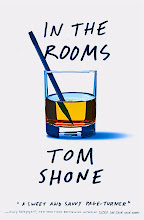 From my Vogue cover story:—
From my Vogue cover story:—'Certainly “Wild” and “Reese Witherspoon” have not, until a year ago, been items that would turn up much in a Google search. It’s not too hard to see what star seeking to shed her studio gleam might find in Strayed’s memoir, a raw, soulful portrait of a woman cut off from the human pack, a “stray”, stripped to the core after the death of her mother and the collapse of her marriage. As she sets about hiking the Pacific Coast Trail, she finds herself dismantling and rebuilding her very identity as a woman, “the one I’d fostered all through my young adult years while trying on different costumes — earth girl, punk girl, cow girl, riot girl, ballsy girl. The one for whom behind every pair of boots or sexy little skirt or flourish of the hair there was a trap door that led to the least true version of me.” The takeaways from Wild are obvious enough —Reese shoots heroin! Has sex with strange men! Swears like a sailor! — but more revealing are the earlier scenes, showing us Strayed alone on the trail. Shot with a minimal crew, with hand-held cameras, no rehersal, with Vallee and his cameraman swapping when the other got tired it felt, says Witherspoon, “more like a documentary than a feature film” and the result has a remarkable candor: Witherspoon’s face plain and unadorned by make-up, slack yet determined, unillumined by the effort of charming people, or pleasing them. One of cinema’s great crowd-pleasers, alone.'

























